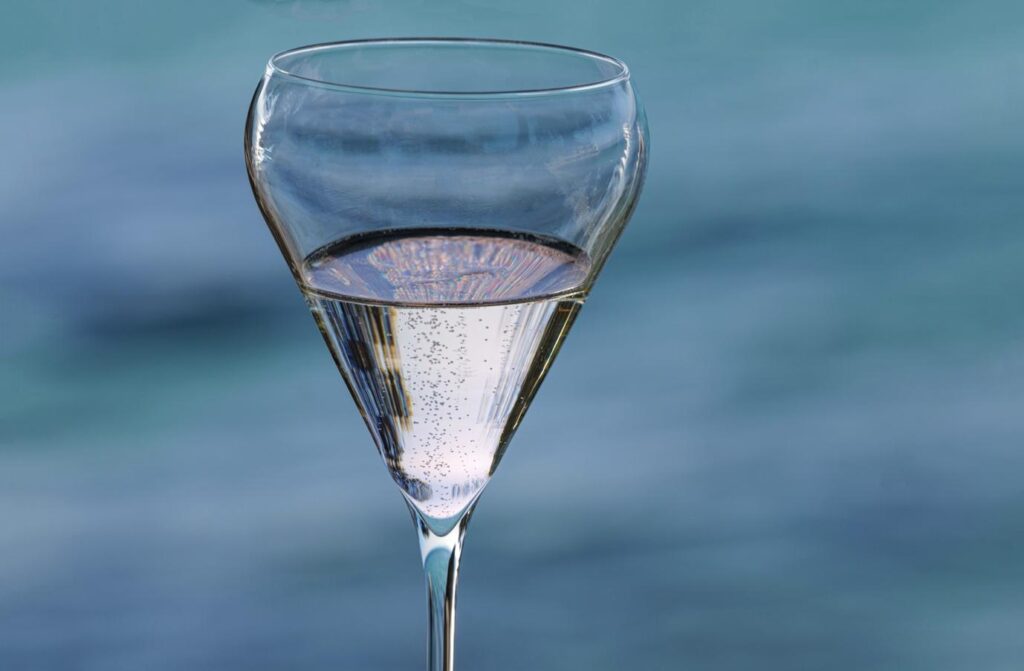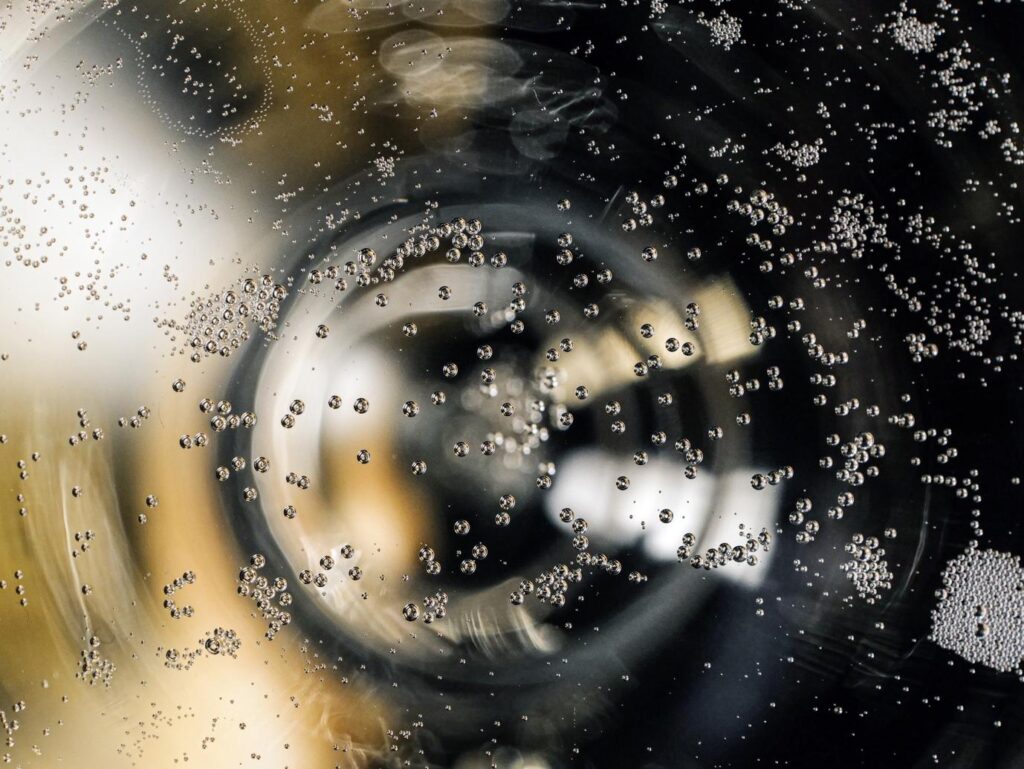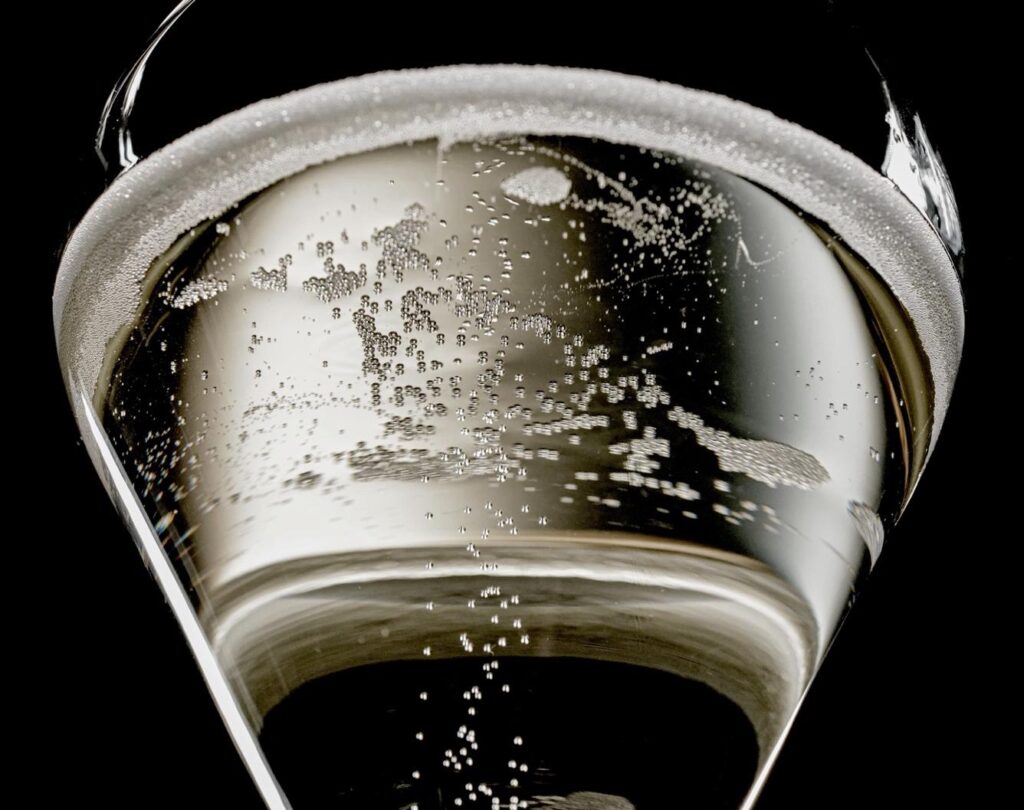What perlage means and why it is an important feature in Prosecco Doc
Perlage is an oenological term used to describe the bubbles inside a glass of sparkling wine that, rising to the surface in subtle paths, resemble precisely pearl necklaces. For connoisseurs, perlage is as important an indicator of the quality of a Prosecco (or sparkling wine) as its taste.
These numerous “pearl necklaces” are the result of the second fermentation of the wine that takes place in the autoclave: in fact, at this stage, the activity of sugars and yeasts leads to the production of ethyl alcohol and Co2, which does not escape from the tank and remains trapped in the wine in liquid form. CO2 will also be present after bottling, thanks to the high pressure inside the glass bottles.
When the bottle is opened and the wine poured, the sparkling wine is suddenly at normal atmospheric pressure, releasing all the Co2 as bubbles. Thin bubbles in a Prosecco are evidence of age: the Co2 is trapped under pressure in the liquid state; once released, since it is no longer compressed by the pressure, it returns to the gaseous state in the form of perlage.
If a prosecco has thin bubbles, it is not a guarantee that the product is of high quality; it is only reliable evidence of its age: over the years, sparkling wine loses carbon dioxide through the wine cap and the bubbles lose intensity and size.
Another crucial factor in bubble behavior is temperature. This does not affect bubble size much, but it does affect the viscosity of the sparkling wine. At slightly warmer temperatures, the wine is less viscous, thinner, and the speed with which the bubbles-and thus the carbon dioxide particles-leave the glass is greater, causing the effervescence to run out much faster.
In generally, Prosecco – and sparkling wine – drinkers much prefer slowly rising, visually more attractive bubbles, and a cold wine is preferred. But if the wine is too cold, the aromas are less perceived by the drinker. So there is no perfect serving temperature, it is a matter of compromise, although it is recommended to serve Prosecco DOC between 6°C and 8°C.
Gérard Liger-Belair, associate professor of physics at the University of Reims Champagne-Ardenne studied the behavior of perlage in a sparkling wine glass in an interesting experiment. He cleaned wine glasses with a very powerful acid to remove any dust particles or fibers. He then filled them with Champagne. Surprisingly, the physicist found that in such a perfectly clean glass no bubbles appear, and the wine appears still. In this case the dissolved carbon dioxide implements its escape as usual, but imperceptibly rising from the surface of the wine without effervescence
This occurs because a bubble, in order to form, needs a birthplace, a pocket of air to help it emerge from the liquid. Usually these bubble birthplaces are invisible cellulose fibers released by cloth or air on the inner surface of the glass. Wherever there is a fiber, a tiny bubble of gas forms in the liquid and then rises through the wine, growing in size as it picks up more carbon dioxide, until it bursts at the surface. One such fiber particle can produce tens of thousands of bubbles..
Therefore in a glass, washed and perfectly dried in a dishwasher, the sparkling wine will show less bubbles. This is why sparkling wine glasses are wiped with a dry cloth just before serving, and some sparkling wine glass manufacturers even laser-apply a special knurling to the inside of the glass.
Bubbles also help emphasize the taste and bouquet of sparkling wines. Through their continuous movement, they create currents in the wine that help circulate the liquid in the glass. Then, when they rise to the surface and burst, they release tiny particles of wine into the air above the glass, greatly accentuating the aroma.



